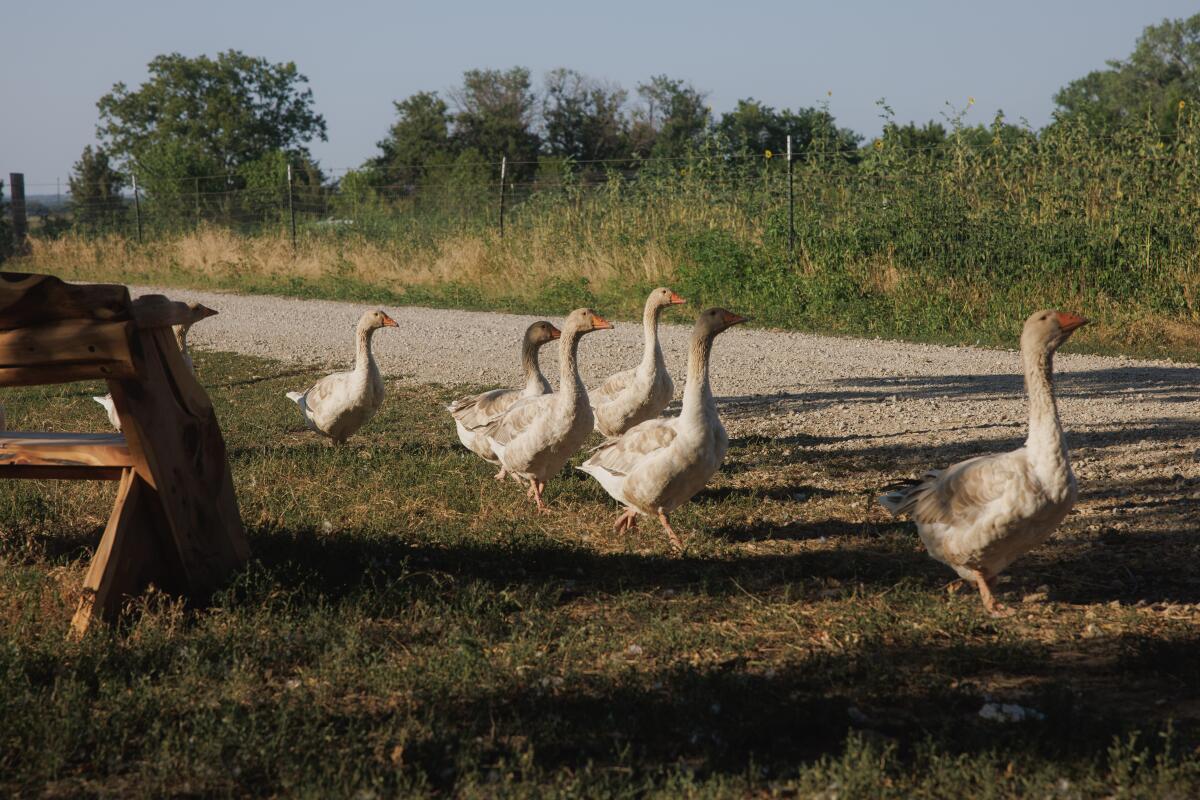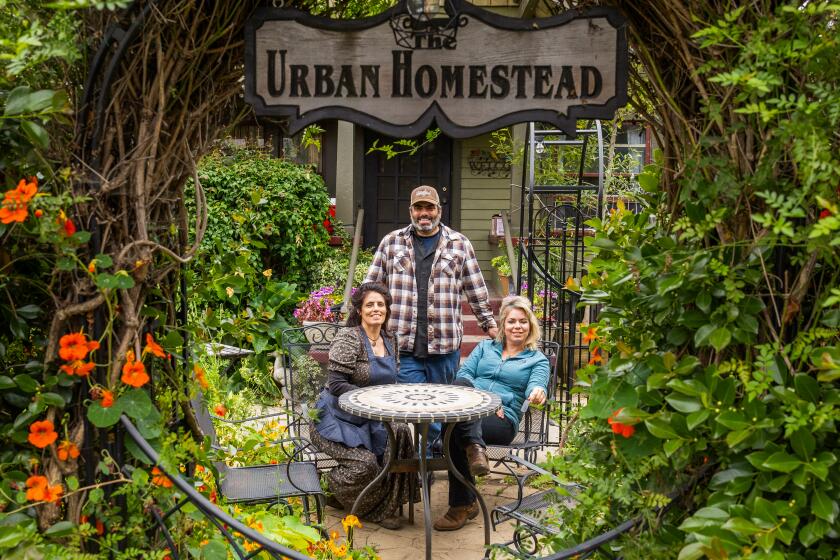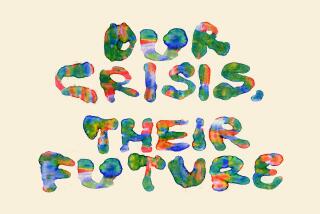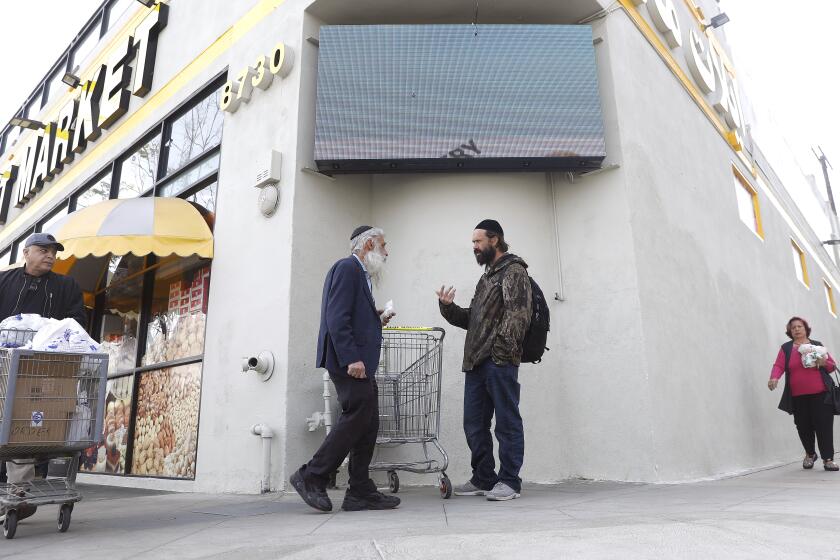Opinion: Here’s how we can turn carbon from a climate threat into an asset

Over the last two decades, my mother has devoted herself to creating a small homestead farm in upstate New York. I’ve had a front-row seat to the tribulations and glories of raising a large flock of chickens, starting an orchard and cultivating an expansive vegetable garden. Up with the sun, endlessly shoveling poop, endlessly weeding, endlessly trying to outwit pests and predators, endlessly praying for rain but not too much at once. (Clearly, growing food is hard enough without also having to deal with climate change, with the changes in seasons and extreme weather it brings.)
Not exactly a chill retirement for my mom, but certainly a gratifying one. She is enamored with the concept of climate victory gardens, of growing your own food as an act of pro-Earth patriotism. It’s amazing how much food you can grow on a single acre. We have (in my biased opinion) the world’s most beautiful chickens gallivanting among fruit and shade trees, eating bugs and comfrey and our leftovers and whatever vegetables they can pilfer from the raised beds, fertilizing the soil with their feces and laying perfect eggs.
Like many, I descend from farmers and fishermen when you go back a few generations. Back to when food was real, local and fresh by default, when there was no need for the term “organic.” Today, instead of diverse crops and animals, integrated and nourishing each other and the soil with flourishing microbiota, we have a high-pesticide, long-distance, ultra-processed, mostly monoculture scenario. This is unhealthy for us and for ecosystems. Nutrients in some vegetables are up to 30% lower compared to the 1950s. (You have to eat three times as much broccoli to get the same amount of calcium!) The ocean side of things has headed in a similar direction, with overfishing and aquaculture that destroy habitats and have horrific records of human rights abuses.
Jules Dervaes Jr. wanted a simpler life when he turned the yard around his city home into the organic Urban Homestead his children still farm 50 years later.
This is in part a cultural issue. Compared with people in other rich countries, people in the U.S. spend the least on food as a percentage of income and the most on healthcare. We expect food at bargain-basement prices and subsidize all the wrong things, like fossil fuels and corn ethanol, while growers are in a race to the bottom of pricing to the detriment of farmworkers, eaters and biodiversity alike.
Globally, research indicates that the food system is the source of 33% of greenhouse gas emissions. We are told it has to be this way in order to feed the estimated 8 billion people on the planet. But clearly, there is ample room for improvement.
Soil, the backbone of farming, is a magnificent substrate that can absorb gigatons of carbon from the atmosphere — but only if it’s alive, webbed with roots and teeming with microorganisms. To restore our agricultural soils, we need to reembrace use of regenerative organic practices. That includes keeping roots in the ground, always — never bare and prone to erosion — by reducing tilling, and planting cover crops and perennials. We need to grow a greater diversity of crops, rotate those crops, use compost to replenish the nutrients in the soil and eliminate fossil-fuel-intensive chemical pesticides and fertilizers.
Reembracing these practices of regenerative agriculture will nurture healthy soil, which makes for healthy plants that collect atmospheric carbon dioxide through photosynthesis. This CO2 is used to both build the plants’ tissues and feed carbon to the microorganisms (a.k.a. microbes) at their roots that deposit carbon into the soil. Along with worms and other critters, these microbes (such as bacteria and fungi) allow more absorption of water (instead of runoff), decompose organic matter and help transfer minerals from the soil into the plant roots. Good for the water cycle, good for the carbon cycle, good for biodiversity. A virtuous symbiosis readying soil for future seeds.
As Earth this week set and then repeatedly broke unofficial records for average global heat, it served as a reminder of a danger that climate change is making conditions steadily worse for farmworkers and others who labor outside.
Some version of “back to the land” has to be part of our climate solution: more people farming again. Leah Penniman and her family started Soul Fire Farm, also in upstate New York, in 2006. They have been manifesting such a vision, growing food in a way that is grounded in community, justice and food sovereignty. I first learned of Penniman in December 2016, when I got an email from my mother containing a link to an hour-long video I ended up watching in full. It was of Penniman speaking at a Northeast Organic Farming Assn. conference.
When I interviewed Penniman for my book, she helped me see how farming and our food system can and must transform. Among her striking insights was how to treat carbon not as an enemy but as a natural element that has been misplaced.
We’ve vilified carbon as a driver of climate change, but carbon is the building block of all life. It’s just in the wrong place. It’s in the atmosphere as methane and carbon dioxide, causing the greenhouse effect. We need it in the soil and in the bodies of living things.
Or as Penniman put it, “Carbon is life,” something we need “back in the soil ecosystem where it’s doing immense good, feeding us and stabilizing the soil when the waters come.”
I take further inspiration from something Larisa Jacobson at Soul Fire Farm told Penniman: “Our job as farmers is to call the carbon and call the life back into the soil. That’s our No. 1 duty as farmers.”
Ayana Elizabeth Johnson is a marine biologist and policy expert. She is co-founder of the nonprofit think tank Urban Ocean Lab, distinguished scholar at Bowdoin College, co-editor of the bestselling climate anthology “All We Can Save” and author of “What If We Get it Right?: Visions of Climate Futures,” from which this piece is adapted.
More to Read
A cure for the common opinion
Get thought-provoking perspectives with our weekly newsletter.
You may occasionally receive promotional content from the Los Angeles Times.












